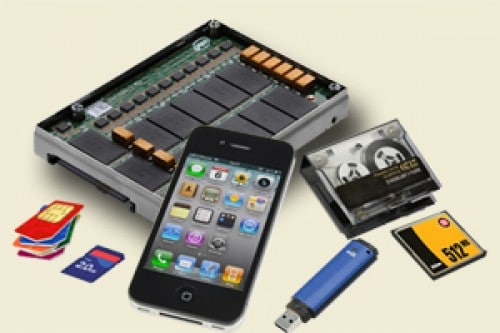Mixed Media Destruction – Choose Versatility
As storage media evolves, security professionals are faced with ever changing destruction challenges. Obviously paper is easy to deal with, but what about CDs/DVDs? Cell phones? Flash memory cards? USB drives? Or other media that hasn’t even been dreamed up yet? When it comes to these items, a mixed media destroyer can be a versatile solution. In many cases, mixed media destroyers are actually industrial grade disintegrators that have been re-engineered to fit and operate in nonindustrial work spaces.
How They Work – A cutting mechanism with three or five knives mounted on a steel rotor passes two fixed bed knives at speeds of up to 600 rpm, continuously cutting material until it is small enough to pass through a perforated sizing screen. Waste is removed by an external air evacuation system or in the case of smaller units, by an internal vacuum. There are two types of rotors, solid or open. Solid rotors are a made from a single piece of steel. They are robust and create more rotational inertia which is best for these type of applications. Open rotors are less robust and better suited for lighter applications such as plastics.
NSA Destruction Requirements for Mixed Media Optical Media – NSA CSS 04-02 requires optical media containing Classified data to be “shredded” with an optical media shredder that is listed on the NSA/ CSS 04-02 Evaluated Products List (EPL) for optical media, or “disintegrated” with a Disintegrator that is currently listed on the NSA/CSS 02-02 EPL for high security disintegrators. Solid state media, including flash drives and USB thumb drives, disintegrate into particles that are nominally two millimeter edge length in size using an NSA/CSS evaluated disintegrator.
The Benefit of User Selectable Particle Sizes – Most equipment produces a standard particle size that cannot be changed. Mixed media destroyers are actually disintegrators, so users can control waste particle size by selecting one of several available screens. Most users have more than one screen to comply with different particle size regulations.

Explore More
- Degausser Technology – Types of Degaussers
- Degaussers – How Can You Be Sure the Data is Gone?
- Mixed Media Destruction – Choose Versatility
- Optical Media Destruction
- Options for Physical Destruction of Storage Media
- Understanding Levels of Degaussing Power
- Use and Care of Electromagnetic Degaussers
- Use and Care of Hard Drive Crushers
- Use and Care of Hard Drive Shredders
- Use and Care of Mixed Media Destroyers
- Use and Care of Optical Media Shredders


